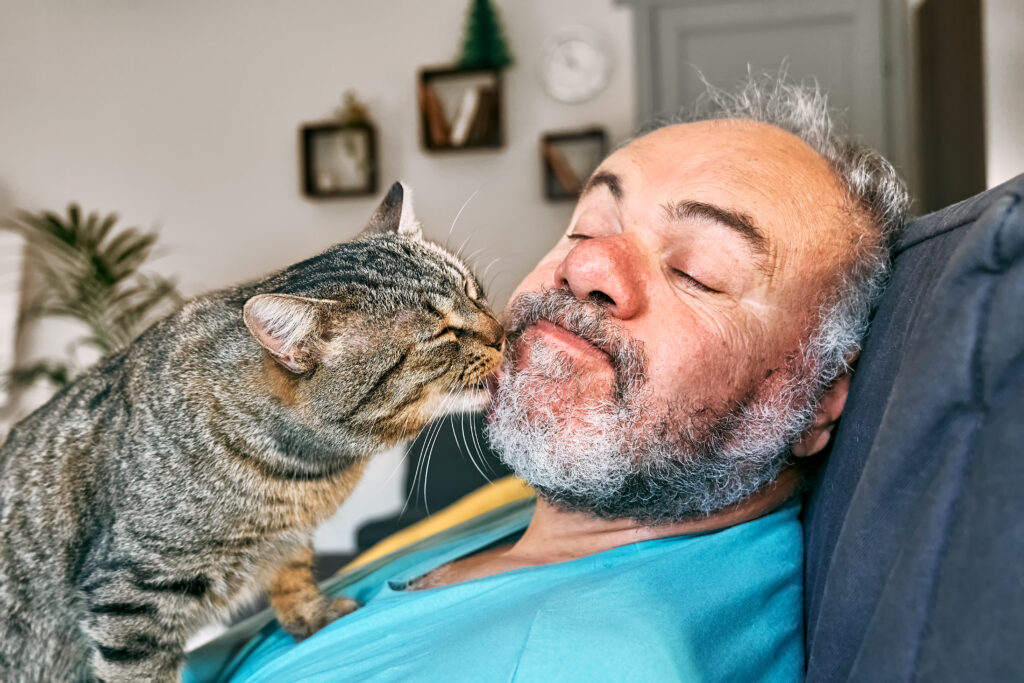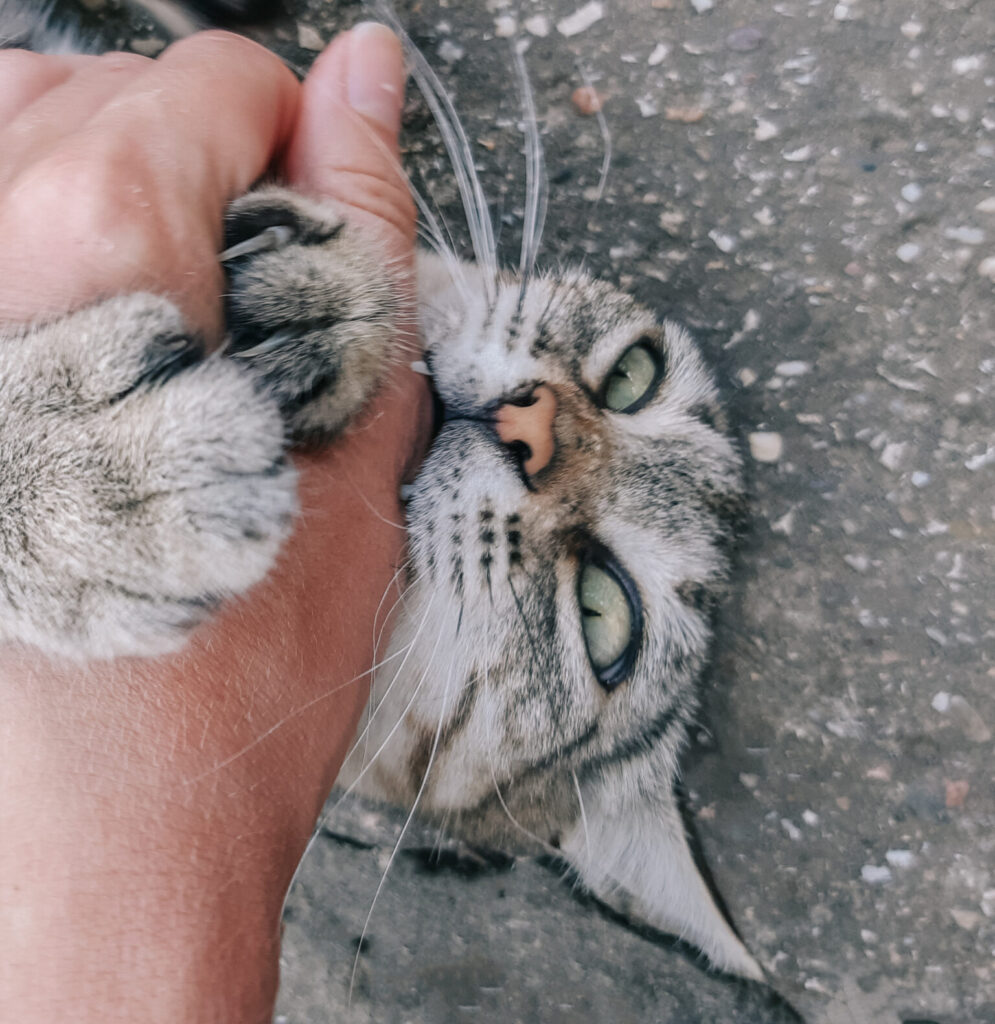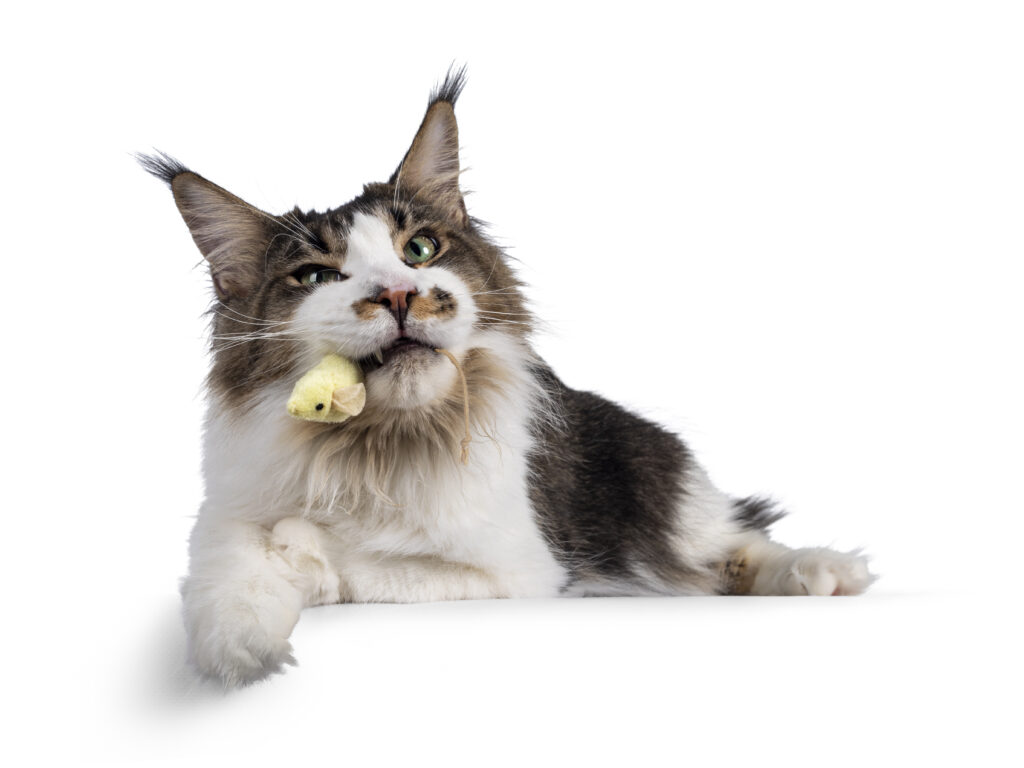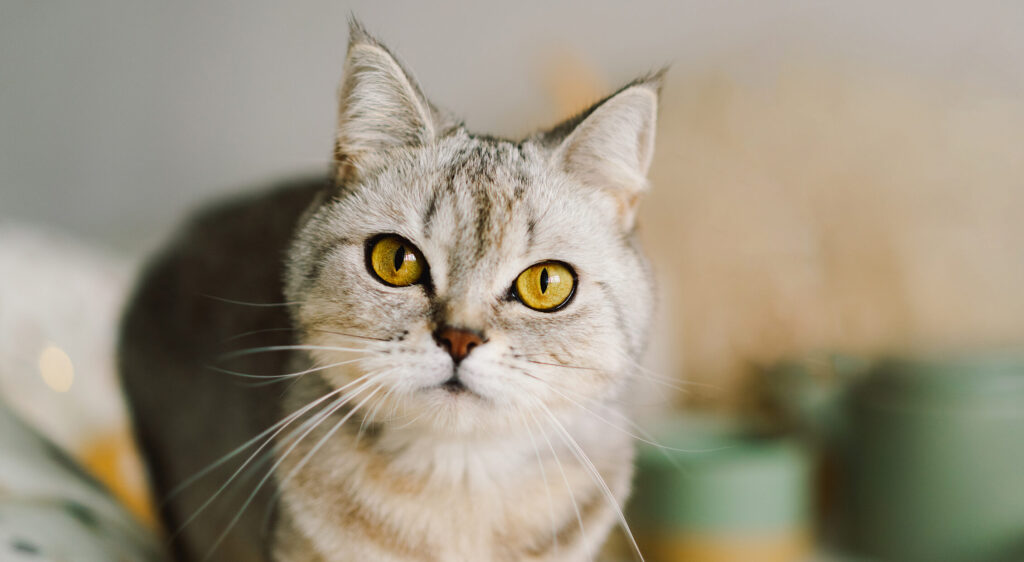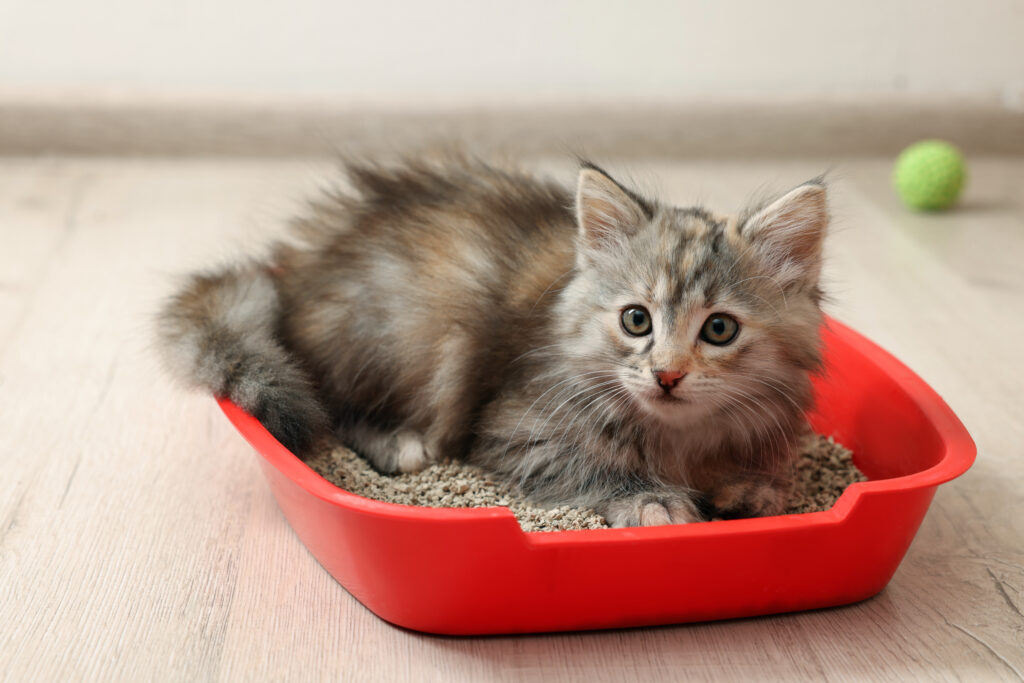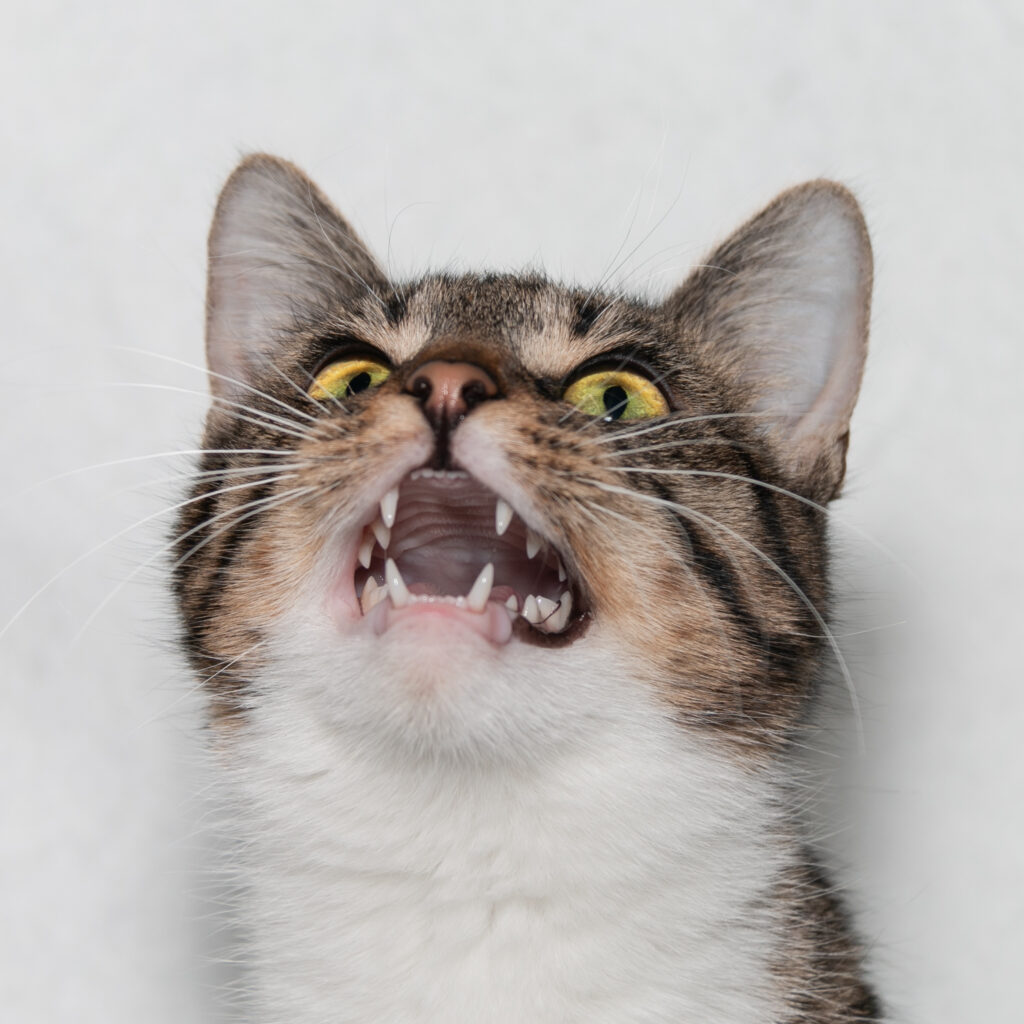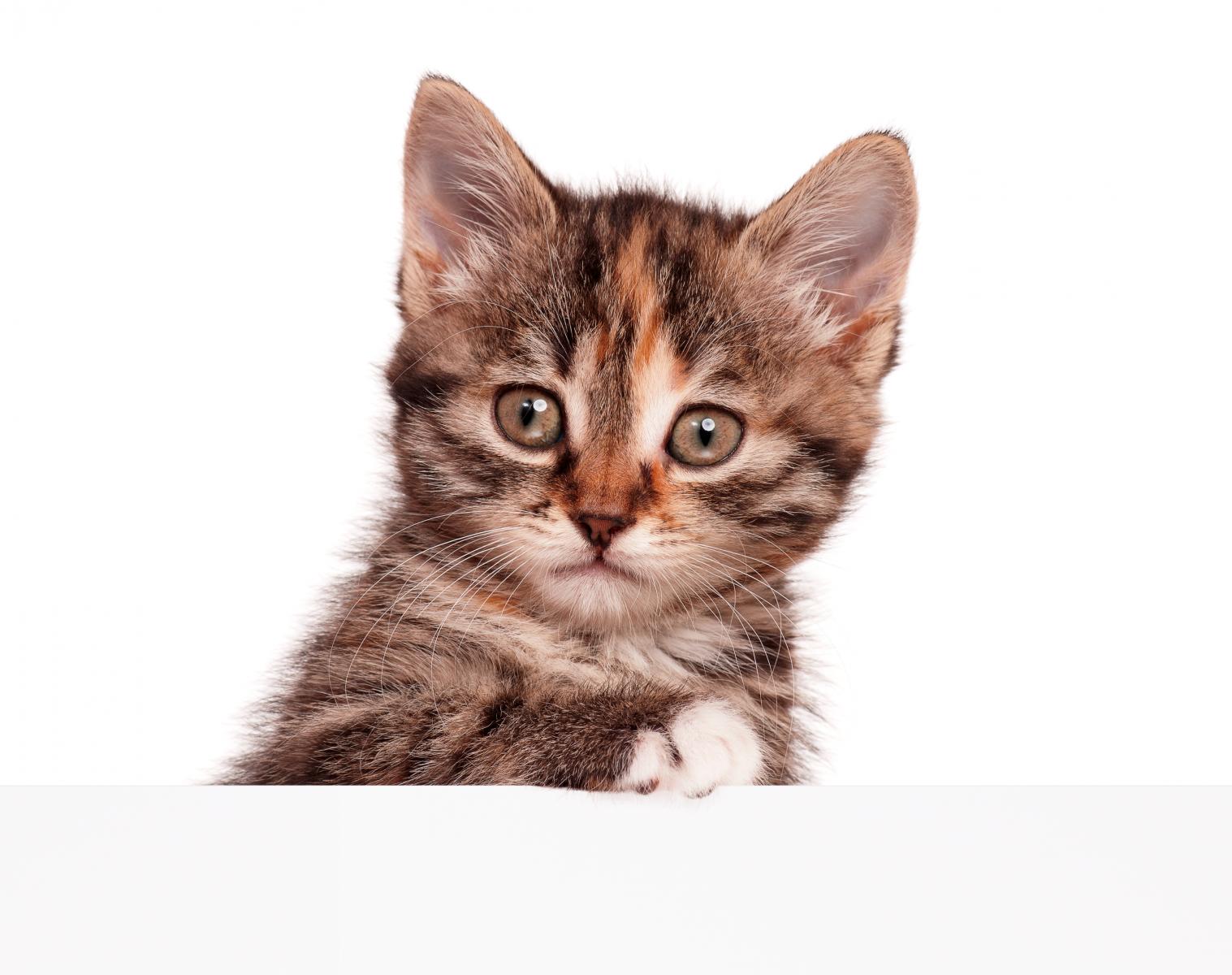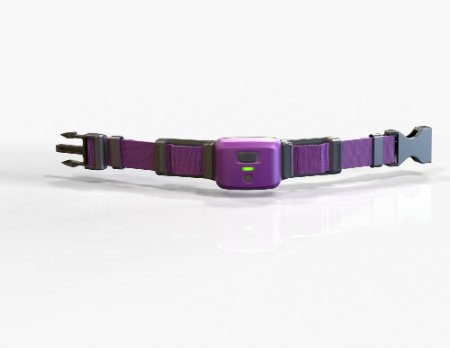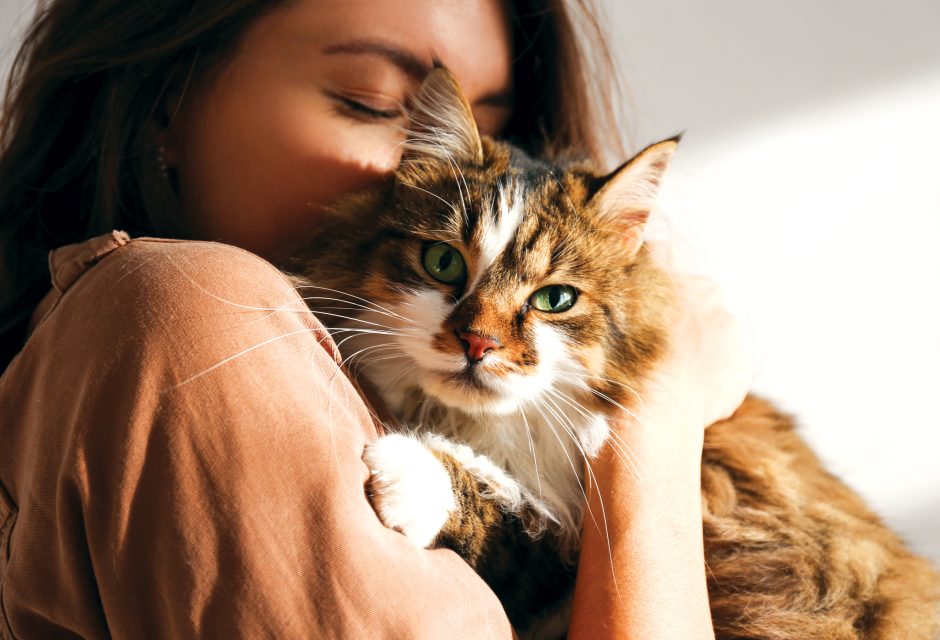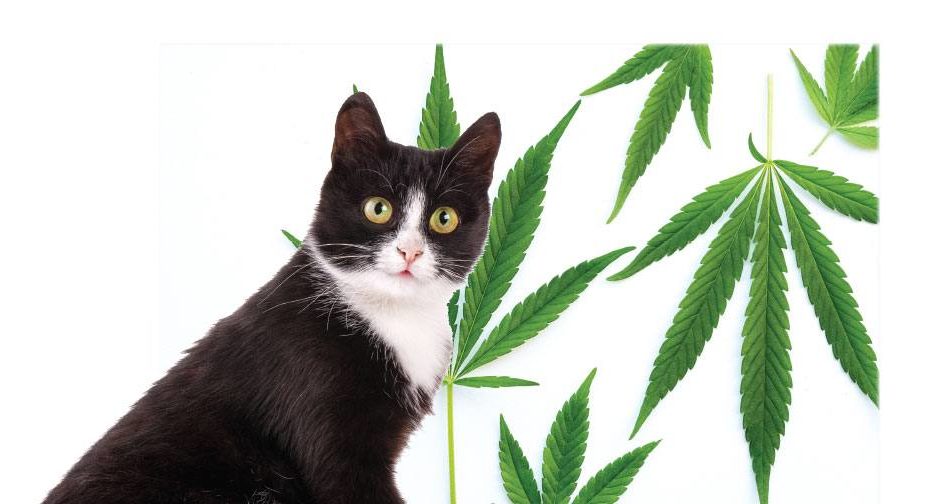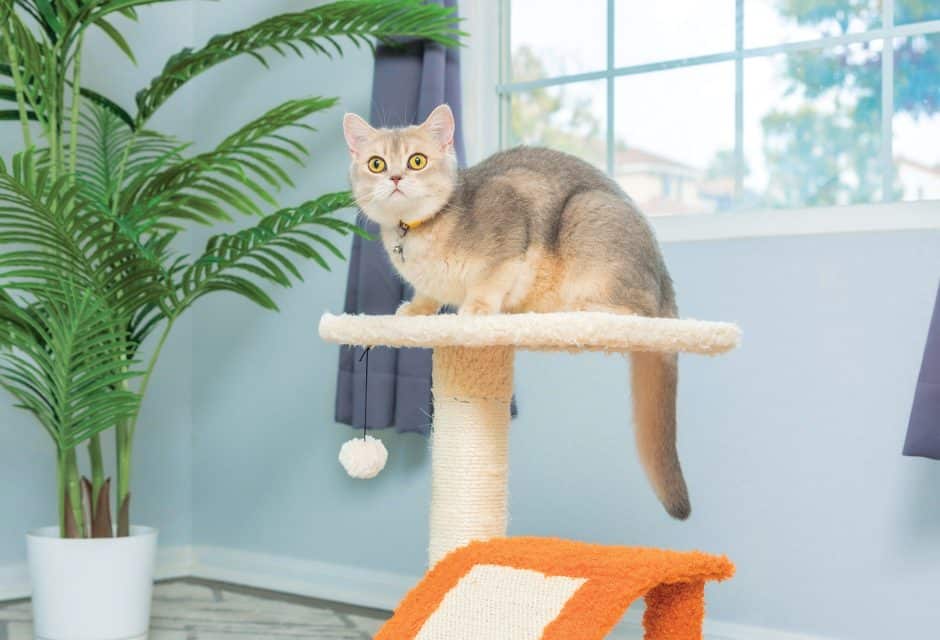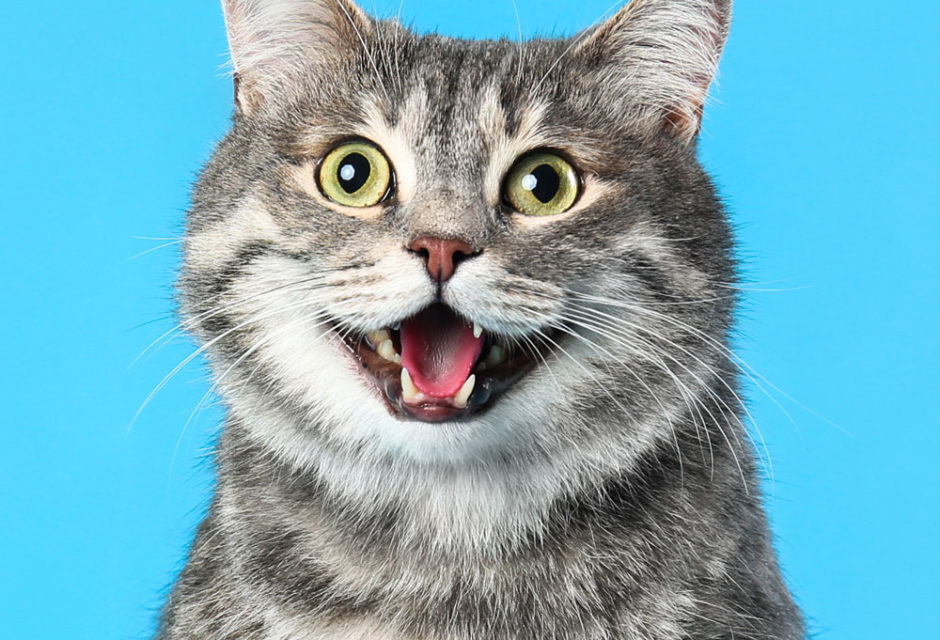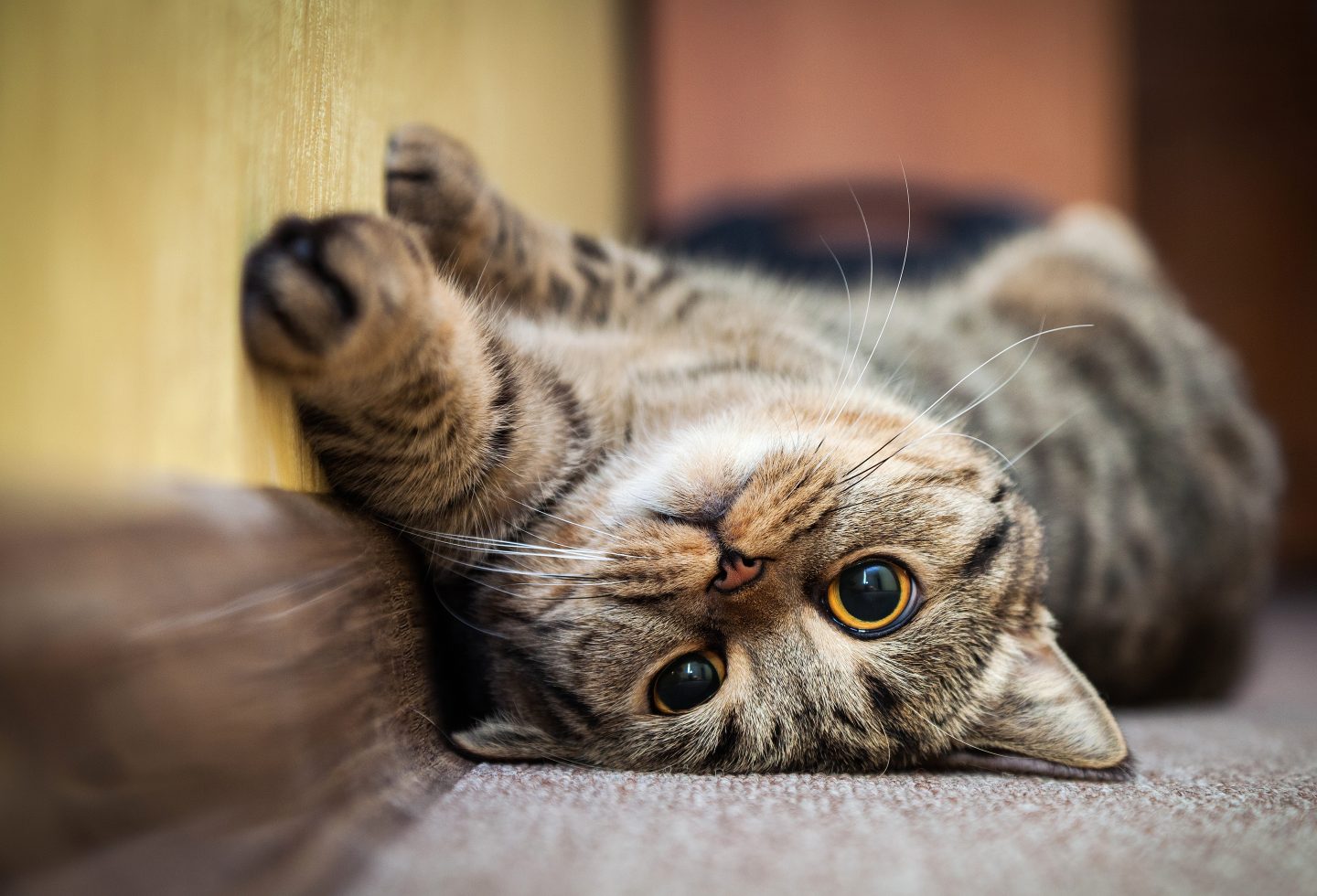
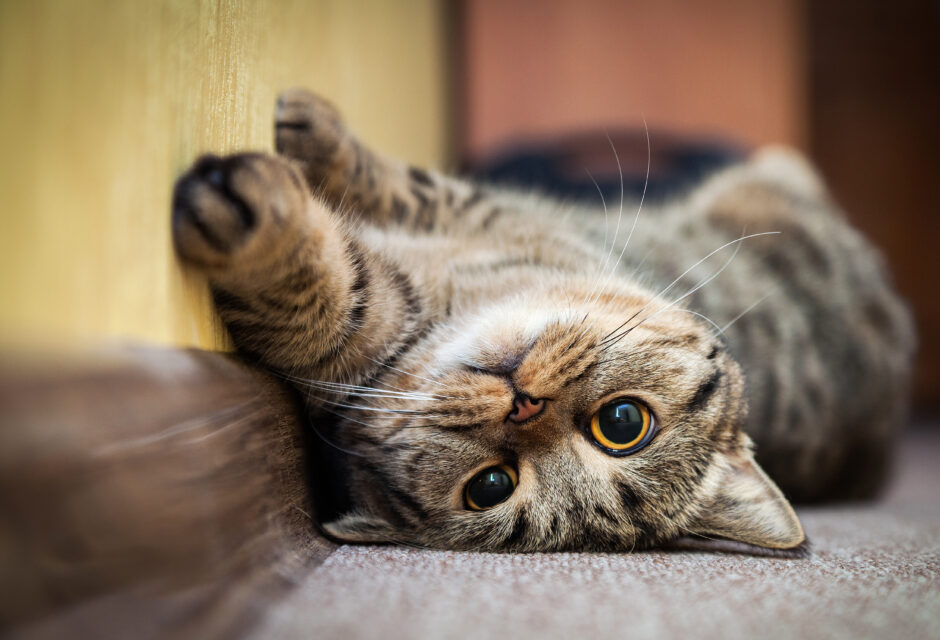
Why Does My Cat Do That?!
7 instinctual cat behaviours that baffle cat owners explained!
By: Mieshelle Nagelschneider, Cat Behaviourist, host of the TV show My Cat From Hell, and author of the cat behaviour science book, The Cat Whisperer
Last Updated:
Are you sometimes baffled by your cat’s behaviour, wondering “why on earth does my cat do that?!” Here, esteemed cat behaviourist Mieshelle Nagelschneider explains what is behind some of the most commonly perplexing cat behaviours. Read on to find out why your does does what he does. (There are good reasons behind that odd behaviour!)
1. Why Does My Cat Lick Me?
Cats have a huge social repertoire, which includes grooming (a.k.a. licking) other cats. But this behaviour doesn’t always apply solely to other felines. Cats can groom other animals, like the family dog. It is also not unusual to see grooming behaviour directed towards humans in the home.
Cats living together establish a natural social organization, forming different relationships with one another and taking on different roles amongst themselves. This can also be true with the humans they live with. Your cat may see herself as your caretaker. This self-appointed role may include keeping up your hygiene! Grooming (licking) is also a bonding activity between cats. This is called communal grooming or allogrooming. Your cat may also be bonding with you as she licks away!
2. Why Does My Cat Lick and Then Bite Me?
What does it mean when your cat licks your hand several times and then suddenly bites you? If your cat is a kitten, this is oftentimes normal play-biting behaviour. Kittens are more likely to play bite during a grooming session; this type of play aggression is a natural part of their social development and nothing to worry about. If your cat is an adult, they may be trying to solicit play. Cats naturally play-fight with other cats, and 35 percent of communal grooming sessions lead to a friendly bite on the opposing cat with the hopes of a round of play-fighting. If you’ve ever seen your cat lick another cat behind the ear and then bite their neck, you have just witnessed the beginning of normal play-fighting behaviour. Cats can develop this repertoire with their humans (or any species). This is especially true if there are no other cats in the home. You can reciprocate the behaviour by petting or brushing your cat and this can promote a closer bond between you.
3. Why Does My Cat Yowl with Cat Toy in His Mouth
Carrying a cat toy in their mouth while meowing or yowling is a very common, instinctual cat behaviour. This behaviour can happen any time of day, but you may notice it more in the evenings. This is when the moon comes out from behind the clouds and your cat’s prey drive has been activated. Many cat owners are perplexed as to why their cats behave this way and often believe their cat is “mothering” the cat toy like a baby, but this couldn’t be further from the truth! Instead, your cat carrying their “prey” in their mouth while vocalizing means your cat is in full prey-drive mode. Yowling in the evening while carrying no toy is a variation on this behaviour. If you see this, you may need to purchase new cat toys.
4. Why Does My Cat Stare at the Wall for No Apparent Reason?
Witnessing a cat staring at a wall for an inordinate amount of time for what appears to be no logical reason can be both intriguing and worrisome for cat owners. I think I’ve heard every possible hypothesis as to why cats are behaving this way. There is always, at least for the cat, a logical reason for the behaviour. Your cat is seeing, hearing, or smelling something that has caught their interest and may have activated their prey drive. Cats really do have a bionic sense of hearing and smelling. A shadow or a light reflection shimmering on the wall, a bug or dark spot that looks like a bug, or a mouse inside your wall are common reasons for the behaviour. The most exciting feeling a cat can feel is when they can hear prey but not see it. This activates a cat’s seeking circuit, located in the reward circuit of their brain. All the feel-good brain chemicals start flowing, and it’s one of the best feelings a cat can experience.
5. Why Does My Cat Run out of the Litter Box at Full Speed?
There can be several reasons for a cat running out of the litter box at full speed as though being chased by an imaginary dragon, but it’s usually nothing to worry about. In fact, this behaviour is one of the most common cat owners ask me about. If your litter box is hidden in a corner in the laundry room or in the dark basement under the stairs, your cat’s fleeing behaviour may be about safety and to literally get out of the area fast to ensure survival. Other cats become playful, digging around in the litter substrate, and this can activate their play behaviour, causing them to zoom out of the litter box. This is commonly seen in kittens and cats under two years of age. If your cat is experiencing distress while defecating or having pain while urinating, this can also cause them to vacate the litter box quickly. If your litter box is dirty and needs changing or you don’t scoop once or twice daily, this can also cause the “Porta-Potty” effect (a.k.a. get out as fast as you can).
6. Unexplained Meowing in the Evenings
Does your cat ever sit at the top of the stairs late at night vocalizing with a trance-like look in their eyes? Maybe they pace from room to room in the evenings, meowing for no apparent reason. Many cat owners are mystified by this behaviour. Again, you have their prey drive to thank for this one. Cats are crepuscular, meaning they are instinctively more active hunting prey during twilight hours. Know that your cat is thriving in their environment when you see a natural behaviour like this surface. Many cats might need a little nudging by their owners in order to activate their prey drive. Don’t worry if your cat doesn’t meow in the evenings, but do provide various wanded toys, cat tunnels, even empty Amazon boxes, and play with your cat. Avoid monotony. Your cat’s brain is designed to live in an environment that provides varied “terrain” and “prey.”
7. Why Does My Cat Place Cat Toys in Food or Water Bowl
Placing cat toys in their food or water bowl is a very instinctual behaviour in cats. Cats will often immobilize their “kill” so that it will not escape. Next time you see a stuffed toy mouse in the water bowl, don’t be alarmed. Depositing a crinkle ball toy in their food bowl can also mean a cat’s doing what’s logical to him – taking the “food” to the food area.
This article originally appeared in the award-winning Modern Cat magazine. Subscribe today!
Join the newsletter and never miss out on cat content again!
"*" indicates required fields
By clicking the arrow, you agree to our web Terms of Use and Privacy & Cookie Policy. Easy unsubscribe links are provided in every email.





